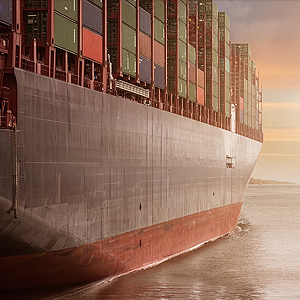Cathodic Protection (Marine & Industrial Applications)
Blog | August 18th, 2017 
Cathodic protection systems stop metal parts from corroding. That’s an invaluable alloy safeguard, especially when we know rust is always threatening our finest marine and industrial systems. After all, water binds readily with iron, then it’s transformed into a weak iron oxide compound. Dissimilar metals also produce corrosive films, so where does cathodic protection fit in as a rust-neutralizing solution? Well, it all begins with an electrical circuit.
Cathodic Protection: A Corrosion Control Circuit
Salt water is a powerful electrolyte. If two dissimilar metals are placed in contact with that water, or even if they’re just exposed to a brine-heavy environment, then galvanic corrosion occurs. Electrons travel, almost as if the metals are acting as the anode and cathode of an enormous battery. We need to break this circuit by applying some basic electrical principles. Fortunately, Cathodic Protection (CP) technology changes this circuit by converting corrosion-prone hulls or industrial metal surfaces into negatively charged elements.
Introducing Sacrificial Anodes
Despite that dramatic prefix, there is a descriptive element at work here, one that explains the basics of cathodic protection. Basically, if the wetted hull of the vessel isn’t positively charged, the circuit is no longer drawing material away from the metal and producing material-fatigue. Instead, a second metal is taking on the role of the positive terminal, the anode, in our giant battery. It gives up its electrons and corrodes so that the assigned cathodic structure, the hull or industrial housing, remains entirely corrosion free. Based on their electrical potentials, the three most common anode materials are as follows:
- Aluminium
- Zinc
- Magnesium
Marine Specification Cathodic Protection
A potential difference is set up between bronze marine metals when they’re fastened to a dissimilar material. Likewise, ferrous-heavy parts experience galvanic action when aluminium components are in close contact with the iron parts. Electrochemical corrosion is next, with the iron alloy seeking to return to its iron oxide form. Marine specced anodes, distributed across the hull and vessel frame, manage the corrosion. The cathode, a role that’s assigned to the hull or industrial framework, does not corrode.
Finally, this passive but effective circuit does manage the potential difference along the hull plating. Aided by a special rustproof coating, plus the addition of numerous anodes, the rusting is almost halted. We say almost because the ship is immersed in an active electrolyte. An equally active solution is required if the ship is to remain in pristine condition. This is a role where ICCP takes precedence. Defined as an Impressed Current Cathodic Protection system, this circuitry uses actual ship’s power to control the ship hull’s potential difference.
Optimized by NetwizardSEO.com.au
Recent Posts
- Yanmar Propulsion Systems: FPP vs CPP Propellers for 6EY and 6N Series Fuel Efficiency
- Mitsubishi K.K. Purifier Separator: The Key to Cleaner Fuel and Smoother Operations
- Kemel Air Seal Retrofits: Leak-Free Stern Tube Seals and Reduced Lube-Oil Risk
- Yanmar Auxiliary Generators: Sizing for Reefers, Hotel Loads, and Dynamic Positioning Systems
- Water Lubricated Stern Tube Bearing (EVR): Proven Technology for Smooth and Quiet Operations
- Marine Spare Parts Australia: Genuine Components for All Vessel Types
- Yanmar Diesel Generators – Powering Remote and Off-Grid Operations
- Authorised YANMAR Parts Supplier in Australia – Genuine Components Guaranteed
- Ship Maintenance Parts: Global Procurement Solutions for Medium to Large-sized Commercial Vessels
- Yanmar Parts Online Australia – Genuine Yanmar Spare Parts at Competitive Trade Prices
